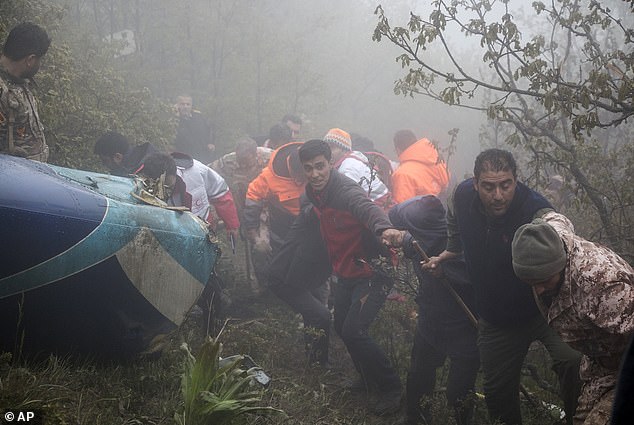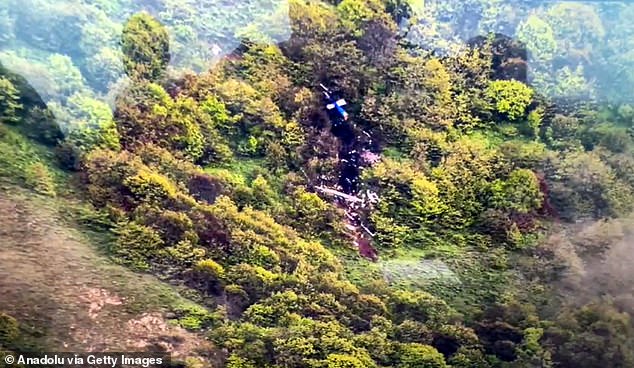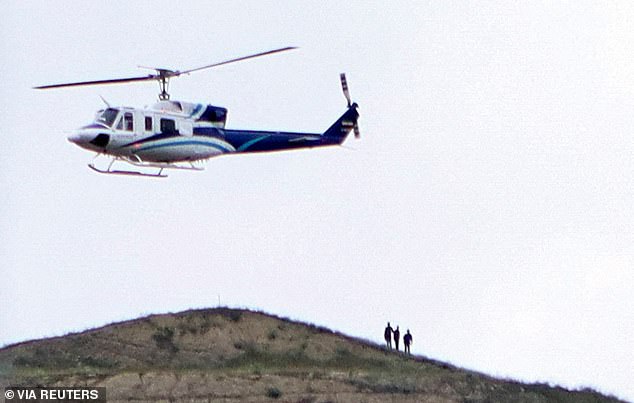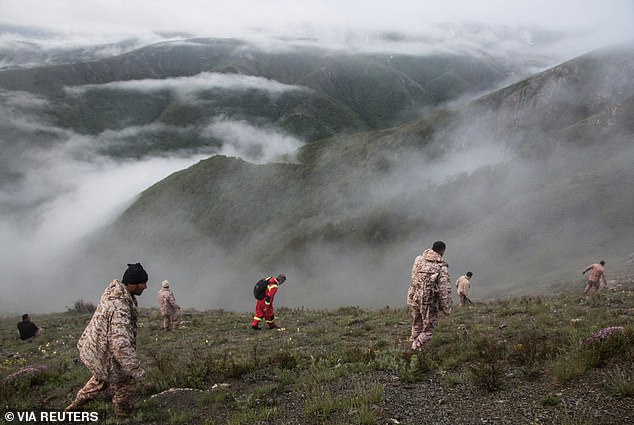Life after the Butcher of Tehran’s death will be dangerous for the entire world, writes MARK ALMOND. Ebrahim Raisi executed thousands, boosted Hamas and courted Putin. His successor could be worse…
Winston Churchill once described Russia as ‘a riddle wrapped in a mystery within an enigma’. The same could be said of Iran today and now, with the death of its president, who was killed in a helicopter attack on Sunday, Tehran’s objectives and ambitions have become even more impenetrable.
Foreign leaders, including China’s Xi Jinping, Vladimir Putin and other anti-Western despots, have expressed grief over the death of Ebrahim Raisi. This also applies to democratically elected leaders such as India’s Narendra Modi and even one or two top officials of the European Union.
Back in Iran, however, the five days of official mourning are disrupted by festive fireworks and the sound of honking cars. To many Iranians, especially the young, Raisi was a bloodthirsty oppressor whom they knew as the ‘Butcher of Tehran’.
On his journey from a youthful participant in the Iranian revolution of 1978-79 – which toppled the shah’s corrupt and repressive regime – to his ultimate destiny as president of the republic itself, the 63-year-old Raisi had followed a tragic common path : from idealistic teenage revolutionary to hanging judge before the age of 30.
Just as the French Revolution of 1789 quickly gave way to the tyranny of Robespierre and the Russian Revolution produced the two despots Lenin and Stalin, so the unity of those who overthrew the Shah soon splintered, giving way to infighting, purges and a new , an even crueler form of autocracy.
Iranian President Ebrahim Raisi was killed in a helicopter attack on Sunday. To many Iranians, especially young people, Raisi was a bloodthirsty oppressor whom they knew as the ‘Butcher of Tehran’

Rescuers at the scene of the helicopter crash in a foggy, mountainous area of Iran
And Raisi stood out as a particularly brutal enforcer of Iran’s dogmatic new leader, Ayatollah Khomeini.
Those who had once opposed the Shah’s regime because they were democrats or socialists – rather than Islamists – were declared “enemies of God” and terribly persecuted.
As a judge, Raisi specialized in handing out death sentences after five-minute trials. In a particularly brutal purge, he convicted as many as 5,000 people in just a few weeks, often overseeing the executions himself.
Victims were hanged in public, with their own children sometimes forced to watch.
The success of his career has not dampened his prospects. Raisi’s elevation to the presidency of the Islamic Republic of Iran in 2021 was a sign that his patron, new Supreme Leader Ayatollah Khamenei (Khomeini’s successor), wanted to crack down on dissent at home and assert Iran’s influence abroad.
The strict enforcement of women’s dress codes was one signal that the ruling fanatics were unwilling to bend or moderate their positions, regardless of domestic pressure from a disaffected population.
And when it came to foreign affairs, it was Raisi who increased Iranian support for radical Islamist groups such as Hamas in Gaza, Hezbollah in Lebanon and the Houthis in Yemen, in an effort to disrupt a united, American-led West.
Raisi also courted Putin’s Russia, supplying it with his cheap – but devastatingly effective – Shahed drones to attack Ukraine.

The mountainous area where the helicopter crashed. Raisi, the Iranian foreign minister and several other officials were found dead

The ill-fated helicopter carrying the Iranian president was photographed as it took off
China also became an ally and agreed to buy much of Iran’s oil as a way to avoid US-led Western sanctions.
Needless to say, this antagonism between the West and Israel has fueled conspiracy theories about how he met his end.
In reality, it is almost certain that the accident was caused by pilot error in dangerous foggy conditions in Iran’s northwestern mountains.
But suspicion that Israeli agents somehow sabotaged Raisi’s helicopter — just as they sabotaged Iran’s nuclear facilities and killed several of its nuclear scientists — is widespread.
Such speculation suits Tehran and helps divert attention from the rising tide of political problems at home.
But Raisi’s sudden death poses a double succession problem for the Islamic Republic.
Iran must not only find a new president but also answer the increasingly pressing question of who will succeed the country’s true power: the ailing 85-year-old Supreme Leader, Ayatollah Khamenei.

Rescue teams are scrambling over the mountains to find the downed helicopter and those on board
Although the Iranian president is the day-to-day head of the government, it is the Supreme Leader who has ultimate authority over the country’s position on every major issue.
Raisi may have fancied himself in the role, but now that he’s out of the picture, we can expect a heated, possibly bloody power struggle among Iran’s revolutionary elite.
Voters will of course have little or no choice, but then democracy as it is in Iran has been discredited and voter turnout has fallen to an embarrassingly low level.
As support for the regime declines, Iran’s Revolutionary Guards, in collaboration with the ‘Basij’ – thugs who act as a kind of local riot police – have become increasingly visible, stoking fear and suppressing dissent.
The Revolutionary Guard is the regime’s most powerful enforcer. Like the Praetorian Guard of the Roman emperors 2,000 years ago, they protect the state and its leaders from threats, both at home and abroad, and it is they who will likely decide who will ultimately become president and supreme leader.
If these elite soldiers openly decide who leads the Islamic Republic, any pretense that Iran is a democracy will disappear. It will be a dictatorship whose political power grows out of the barrel of a gun, as Mao Zedong once said.
And therein lie enormous dangers for the regime itself – as history teaches us. The sources of discontent that disfigured and then destroyed the Shah’s regime in the year before 1979 have resurfaced in Iran.
At the time, Iranians of all ages and both genders were disgusted by the corruption of the Shah’s henchmen and the waste of the country’s natural oil resources on prestige projects and massive military spending.
Nowadays you see the daughters of the Muslim elite partying in New York, wearing clothes that are much more revealing than what girls wear at home. Photos of them are circulating in Tehran at a time when ordinary Iranians are finding life under Western sanctions increasingly difficult.
People also wonder why Iran is sending billions to terrorist groups abroad while its own citizens are getting poorer.
But those who rejoice in the demise of the Butcher of Tehran should be careful what they wish for. The largest and oldest country in the Middle East lies in the heart of the most sensitive geopolitical region in the world.
Will Iran’s embattled mullahs respond to the crisis by redoubling their efforts – for example, accelerating the race to acquire nuclear weapons, or lashing out with further armed conflict in the region?
Yes, let us hope for an end to the Islamic Republic, which served Ebrahim Raisi so cruelly for so long. But we must pray that it doesn’t end with a bang, but with a whimper.
